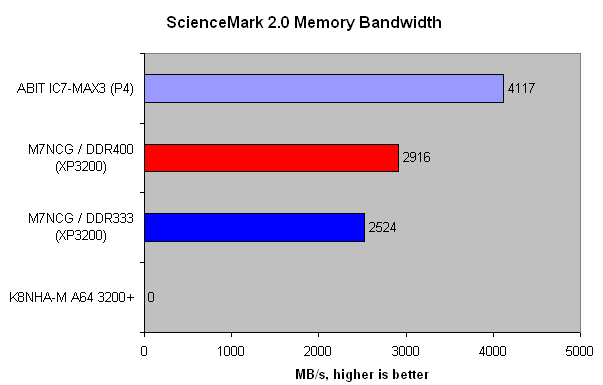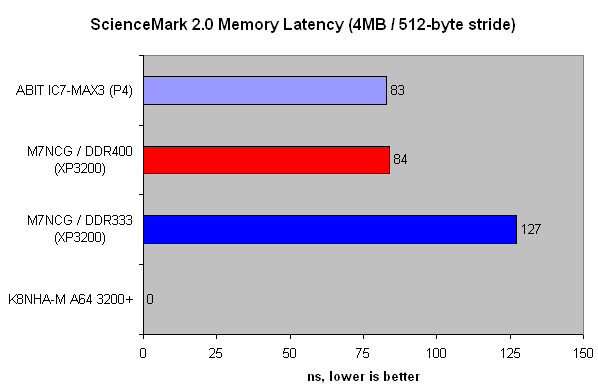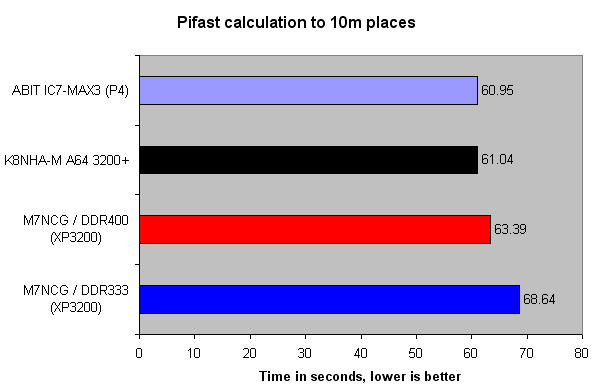ScienceMark 2.0, Pifast
The benchmarks that follow will spell out the performance difference in graphic fashion - literally. What we must note is that the M7NCG400 400 is run in three different configurations. Firstly, at default speeds with a Barton XP3200+. That translates to 2200MHz with dual-channel DDR333 memory. Remember that the board is not ratified at dual-channel DDR400. Secondly, we managed to run it as a standard nForce2 Ultra 400, which means 2200MHz / DDR400 DC memory. Lastly, and restricted to the 3D section, is the board at the default 2.2GHz / DC DDR333 with the on-board GeForce4 MX graphics. The 3.13 chipset drivers contained the 52.16 Dets..
In terms of memory bandwidth judged by ScienceMark 2.0, the K8NHA-M's 0 rating is due to the board constantly crashing and rebooting when running the test. No BIOS setting, however relaxed, would let us complete the test. In the board's defence, we must note that it was a paradigm of stability in every other benchmark barring ScienceMark 2.0,
We expect the Canterwood to take first place. Its host processor is able to take advantage of dual-channel memory architecture. What's a little surprising is the drop in bandwidth from DC DDR400 to DC DDR333. The processor, at 200MHz FSB, cannot make use of more than 3.2GB/s, yet DC DDR333 potentially affords up to 5.4GB/s.

The nForce3 150 Biostar steadfastedly refused to complete the latency analysis, too. What's eye-opening is the increase in latency when going from DC DDR400 to DC DDR333. We mentioned that clock buffering, which is the name given to the IGP's attempts to reconcile the disparate CPU and memory clocks, will have an impact on latency. We now see by just how much. There's not too much to be gained by having asynchronous settings, evidently.

Our ScienceMark analysis didn't offer too much in the way of the K8NHA-M. What we did know was that manual latencies of 2.5-6-2-2 were applied by the board. These manifest themselves into an excellent 61s time for Pifast, our first real-world test. Previous nF3 150 boards, with locked-out timings, have hovered around the 63s mark. Impressive performance from only 2GHz of clock speed.
Lower bandwidth and significantly higher memory access latencies force the M7NCG 400 to lose over 5 seconds from the preferred but unsupported DC DDR400 setting. You can see just how important it is to have synchronous settings.









